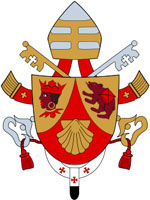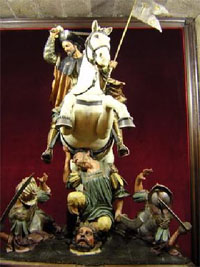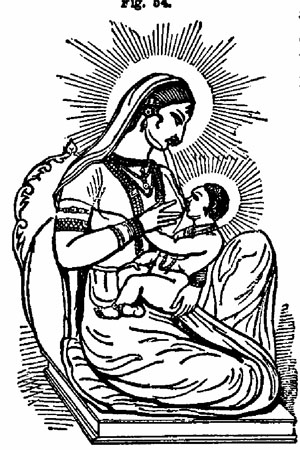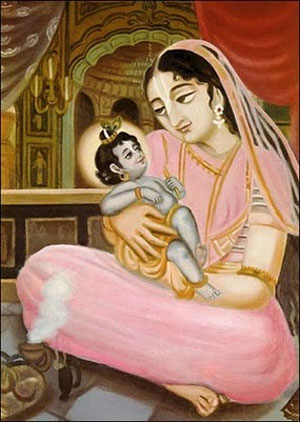Satan, the True Hidden God
 |
| Pope Benedict XVI's Coat of Arms |
The deeply buried secret of the babylonian mysteries is that all worship on a counterfeit calendar is actually directed to the hidden god, Saturn, a.k.a. the arch-rebel, Nimrod. While the external parade of rites and ceremonies is primarily preformed on Sunday, the hidden god at the root of it all remains Saturn. The coat of arms of the current pope, Benedict XVI, clearly symbolizes this. Every pope since the 12th century has had his own personal coat of arms. Each one has similarly incorporated the "keys of Peter" into the design.
The Vatican website explains the symbols emblazoned on his personal coat of arms as "a Moor's head in natural colour . . . This is an ancient emblem of the Diocese of Freising [Bavaria], . . . the Moor's head is not rare in European heraldry. It . . . is common in the Bavarian tradition."1 The scallop shell at the bottom is explained: "The scallop shell . . . has been used for centuries to distinguish pilgrims. Benedict XVI wanted to keep this symbolism alive . . . ." The animal is described: "A brown bear, in natural colour, is portrayed . . . An easy interpretation: the bear tamed by . God's grace is the Bishop of Freising himself; the pack saddle is the burden of his Episcopate."2
This may be a suitably simple, politically correct explanation for the masses, but it is not the deeper, hidden meaning. The pope's coat of arms was created specifically for him by Archbishop Andrea Cordero Lanza di Montezemolo (later created a Cardinal.) Anyone as well-acquainted with heraldry as to be commissioned to design the new pope's personal coat of arms is also well-acquainted with its traditional heraldic meaning. A bear symbolizes "strength, cunning, ferocity in the protection of one's kindred."3
 |
| St. James the Moor-Slayer. This famous statue is on display in the Cathedral of Santiago de Compostela. While one Muslim is being trampled to death under his horse's hooves, two other dying Moors flank him on either side. Directly in front is a Moor's head separated from its body, blindly staring up at his killer. |
A Moor's head "dates back to the Middle Ages when it was considered an honor to take a Moor's head."4 Such symbology is not only a racial insult, but is also an affront to every Muslim as Moors were, without exception, of the Islamic faith. The Crusades mercilessly slaughtered Muslims, Jews and apostolic Christians alike. It was during the Crusades that it was considered an honor to decapitate a Moor because of his religion.
This meaning is underscored by the scallop shell. While it may be true that the scallop shell "has been used for centuries to distinguish pilgrims," specifically it symbolizes St. James, the patron saint of Spain. His shrine is in Santiago de Compostela, one of only three Catholic "holy cities."5 Because Santiago de Compostela is near the coast of Spain, a scallop shell became a symbol of the saint whose shrine was located there. St. James is more commonly known as Santiago Mantamoros: St. James the Moor Slayer! According to tradition, "Saint James the Apostle appeared as a ferocious sword wielding warrior on horseback to help Christian armies in battles against the Moors during the Reconquista. By virtue of his sainthood, battles in which Saint James the Moor-slayer took part always resulted in Christian victories against their Muslim foes."6
These appalling symbols were carefully selected. They were used in a different arrangement by Cardinal Ratzinger before becoming Pope Benedict. In 1981, Ratzinger was appointed Perfect of the Congregation for the Doctrine of the Faith, formerly known as the Holy Office of the Inquisition. This made him the successor to the Grand Inquisitor. Even before being selected pope, Benedict was a prominent and knowledgeable theologian. His decision to include a bear, a scallop and a Moor's head was a purposeful choice, as the Vatican concurs, "Cardinal Joseph Ratzinger, elected Pope and taking the name Benedict XVI, has chosen a coat of arms rich in symbolism and meaning that transmits to history his personality and Pontificate."7

In September of 2006, Benedict angered Muslims around the world when he quoted from an obscure medieval text, saying, "Show me just what Mohammed brought that was new, and there you will find things only evil and inhuman, such as his command to spread by the sword the faith he preached." Muslims were outraged and demanded an apology.
"Salih Kapusuz, the deputy head of the Turkish ruling AKP party, said Pope Benedict's remarks were either the result of pitiful ignorance or a deliberate distortion. ‘He has a dark mentality that comes from the darkness of the Middle Ages,' he said. ‘He is going down in history in the same category as leaders such as Hitler and Mussolini.'"8 The Pope has never offered an apology, opting instead to simply express sorrow that some people had been upset.
The fact that the pope deliberately chose to include such inflammatory symbols in "a coat of arms rich in symbolism and meaning" for the specific reason of transmitting to history "his personality and Pontificate" begs the question: Precisely what is Benedict planning for his pontificate?
Aside from the gruesome, barbarous connotations which accompany using a Moor's head on one's personal coat of arms, there is yet a deeper level of symbolism that must be understood. A head with the coloring and features of a man from the Negroid race is revealing when compared with how Nimrod was represented.
I have already noticed the fact that Nimrod, as the son of Cush, was a negro. Now, there was a tradition in Egypt, recorded by Plutarch, that "Osiris was black," which, in a land where the general complexion was dusky, must have implied something more than ordinary in its darkness. Plutarch also states that Horus, the son of Osiris, "was of a fair complexion," and it was in this way, for the most part, that Osiris was represented. But we have unequivocal evidence that Osiris, the son and husband of the great goddess-queen of Egypt, was also represented as a veritable negro. In Wilkinson may be found a representation of him with the unmistakable features of the genuine Cushite or negro.9
This illustration from The Manners and Customs of the Ancient Egyptians10 directly links Osiris with Nimrod. The name "Nimrod" comes from Nimr, a "leopard," and rada or rad "to subdue." Therefore, the name means "the subduer of the leopard." Thus, a leopard's skin was closely identified with Nimrod and the high priests of Osiris wore leopard skins when called upon to officiate at any high occasion.  "That dress directly connects him [Osiris] with Nimrod. This negro-featured Osiris is clothed from head to foot in a spotted dress, the upper part being a leopard's skin, the under part also being spotted to correspond with it."11
"That dress directly connects him [Osiris] with Nimrod. This negro-featured Osiris is clothed from head to foot in a spotted dress, the upper part being a leopard's skin, the under part also being spotted to correspond with it."11
Another image of Osiris12 shows him with darker skin than the already dusky Egyptians and, furthermore, portrays him as being a giant. Notice the priest standing in front of Osiris. This is not a child; he has a beard. The priest is wearing a leopard skin, showing he is a priest of Osiris. The artist was not taking "artistic license," portraying the figures disproportionately. Rather, this picture is consistent with the various accounts that claim Nimrod was of gigantic stature.
Elsewhere as well, Nimrod was represented as black. "In India, the infant Crishna (emphatically the black god), in the arms of the goddess Devaki, is represented with the wooly hair and marked features of the Negro or African race."13 More modern representations also show Crishna/Krishna as having a different color of skin from his mother.
 |
 |
| This engraving from The Hindu Pantheon, shows the Hindu Nimrod, Krishna with marked African hair and features (Edward Moor, London: T. Bensley, 1810). | Modern artwork still portrays Krishna with dark skin. |
The weight of evidence would indicate that Nimrod did indeed have the physical characteristics of the Negroid race. As Nimrod/Saturn was the god of Saturday, and Nimrod was represented as African in appearance, a Moor's head is an appropriate symbol of the hidden god, Saturn and its worship day, Saturday. "Saturn, the hidden god, - the god of the Mysteries, whom the Pope represents, whose secrets were revealed only to the initiated"14 is symbolized on Pope Benedict's coat of arms as a Moor's head. Prominently displaying a symbol understood only by the initiated indicates the Pope's position as Grand Interpreter of the Mysteries.
In prophecy, a bear symbolizes Medo-Persia.15 The exaltation of Sunday as a holy day comes from the Persian mystery religions, specifically Mithraism. A bear, therefore, fitly symbolizes Sunday exaltation. "The functional purpose of [coats] of arms is identification."16 Therefore, as the two emblems emblazoned on Pope Benedict's personal coat of arms are deeply buried symbols of both Sunday and Saturday, their purpose is to identify their owner, to the initiated, as the chief authority over both days of worship. To the uninitiated, this is carried over in practice by the principle that one may attend Sunday mass on Saturday after 4 p.m. and have it count as the weekend mass.17
But there is still one final mystery to penetrate: the identity of the ultimate hidden god. Whom did Nimrod represent? The apostle Paul answered this question: "But I say, that the things which the Gentiles [pagans] sacrifice, they sacrifice to devils, and not to Yahuwah: and I would not that ye should have fellowship with devils."18 The power that inspired Nimrod and all of his worshippers is none other than that of Satan, the adversary.
Now, on inquiry, it will actually be found, that while Saturn was the name of the visible head, Teitan was the name of the invisible head of the beast [of Revelation 13]. Teitan is just the Chaldean form of Sheitan, the very name by which Satan has been called from time immemorial by the Devil-worshippers of Kurdistan; and from Armenia or Kurdistan,19 this Devil-worship embodied in the Chaldean Mysteries came westward to Asia Minor, and thence to Etruria and Rome. It is undeniable . . . that Teitan, in Pagan belief, was identical with the Dragon, or Satan.20
It may be difficult for modern readers to see the connection between "Satan" and "Teitan." However, the link in etymology is there. Ancient Chaldee frequently transformed Sh or S into T. Consider the following examples:
Hebrew Chaldee
Shekel (to weigh) Tekel
Shabar (to break) Tabar
Seraphim Teraphim
Asar (to be rich) Atar
Remove all of the deceptions, the symbols, the pagan rites and Christian names; what remains at the core is the identity of the god hidden behind all ancient and modern false religion: Satan. This is not a denunciation against Roman Catholics. Rather, this is an acknowledgment that the "mystery of iniquity"21 spoken of by the apostle Paul in the first century has permeated the entire world, Jews and Protestants included. The passing centuries have buried the truth about the Babylonian mysteries so deeply that none but modern initiates have known the truth: all who worship on Saturn's day are ignorantly worshipping Saturn/Sheitan/Satan. In scripture, Babylon is a symbol of confusion and false religion. However, most scholars agree that the name actually meant "Gateway of the gods."
The day on which one worships directs that worship to the Deity/deity of that day. Worship by a counterfeit calendar thus becomes a gateway to false gods (demons). This was a principle acknowledged by Yahushua Himself when He said, "For the Son of man is Master even of the Sabbath day."22 The lord of Sunday is Solis Invicti (the invincible sun). The lord of Saturday is Saturn/Sheitan/Satan. The Master of the Sabbath day is the Creator. To direct one's worship to the correct deity, one must worship on that Deity's/Deity's day, calculated by His/his calendar. Laying aside work and observing a holy day of rest, is an act acknowledging allegiance to the divinity that lays claim to that day.
Do not be tempted to suppose that worship on Sunday is the lesser of the two evils. Worship on Saturday directs one's worship to the hidden god, Saturn/Sheitan/Satan. However, the two worship days are inseparably bound. Worship on Sunday, the "first" day of the week, perpetuates the lie that Saturday, the "seventh" day of the week, must be the true Sabbath. All who worship by the pagan/papal calendar created, perpetrated and sustained by those very same Babylonian mysteries which assumed a Christian disguise in the 4th century C.E. are joining in the worship of Nimrod. In so doing, they are giving honor to the power that inspired him: Satan.
Sunday-keeping Protestants and Saturday Sabbatarians have been unjustified in feeling morally superior to Roman Catholics. Sir George Sinclair of Ulbster stated: "Romanism is a refined system of Christianized heathenism, and chiefly differs from its prototype in being more treacherous, more cruel, more dangerous, more intolerant."23 This strong denunciation embraces all of Christendom, indeed, the entire world that is united in using the counterfeit calendar of the Babylonian/Roman mysteries.
The battle over worship, begun when Lucifer first sought to usurp the homage due to the one true Eloah, will rage with increased intensity to the very close of time. This is the issue of the final struggle in the great controversy between the Creator and Lucifer. The very fact that the mysteries of Babylon are now being laid open, that the hidden god, Saturn, is now being exposed for the devil-worship that it is, reveals as nothing else can, that the time spoken of in Revelation as occurring just before Yahushua returns is right upon us.
In the Apocalyptic visions, it is just before the judgment upon her that, for the first time, John sees the Apostate Church with the name Babylon the Great "written upon her forehead" (Revelation 17:5). What means the writing of that name "on the forehead"? Does it not naturally indicate that, just before judgment overtakes her, her real character was to be so thoroughly developed, that everyone who has eyes to see, who has the least spiritual discernment, would be compelled, as it were, . . . to recognize the wonderful fitness of the title which the Spirit of . . . [Yahuwah] had affixed to her. Her judgment is now evidently hastening on; and just as it approaches, the Providence of . . . [Yahuwah], conspiring with the Word of . . . [Yahuwah], by light pouring in from all quarters, makes it more and more evident that Rome is in very deed the Babylon of the Apocalypse; that the essential character of her system, the grand objects of her worship, her festivals, her doctrine and discipline, her rites and ceremonies, her priesthood and their orders, have all been derived from ancient Babylon.24
The conflict is much bigger than Catholics versus Protestants or Sunday-keepers versus Saturday-sabbatarians. Heaven is now revealing to minds long darkened by assumption and tradition the errors of pagan mystery worship in contrast to the truths of the worship of the Creator. To worship a pagan god simply requires calculating one's worship day by a pagan calendar. In order to show loyalty to the Creator, His luni-solar calendar must be used to locate His holy Sabbath day. This is the issue, the decision facing everyone in the world: Whom will ye serve?
1 See www.vatican.va/holy_father/benedict_svi/elezione/stemma-benedict-svi_en.html. While it may be "common in the Bavarian tradition," no one knows how the tradition began.
2 Ibid.
3 See www.heraldry.ws/info/article05.html; also, www.fleurdelis.com/meanings.htm
4 Ibid.
5 The other two are Rome and Jerusalem.
6 See www.crusades-encylopedia.com, St. James the Moor Slayer, emphasis supplied.
7 See www.vatican.va/holy_father/benedict_svi/elezione/stemma-benedict-svi_en.html, emphasis supplied.
8 www.telegraph.co.uk/news/worldnews/1529021/Muslims-condemn-Pope-for-insulting-Prophet.html
9 Hislop, op. cit., p. 43, emphasis supplied.
10 Sir John Gardner Wilkinson, op. cit., Vol. VI, Plate 33.
11 See Hislop, op. cit., pp. 44 and 45; Wilkinson, op. cit., Vol. IV, pp. 341 and 353.
12 Osiris was typically portrayed wearing the white shroud of a mummy as he was god of the afterlife.
13 Hislop, op. cit., footnote, p. 238, emphasis original.
14 Hislop, ibid., p. 271.
15 See Daniel 7; compare with Daniel 2:38-40.
16 www.stedmundsbury.gov.uk/seb/live/arms.cfm
17 Office of Bishop Skylstad, Catholic Diocese of Spokane, Washington. Upon inquiry, the Assistant to the Bishop stated, "Anything after 4 o'clock on a Saturday can be considered the weekend mass. That takes care of the whole weekend. You don't have to go again on Sunday."
18 See I Corinthians 10:20.
19 Frederick Walpole, The Ansayrii, (London: Richard Bentley, 1851) p. 397. See also, Sir Austen H. Layard, Nineveh and Its Remains, (London: John Murray, 1853), Vol. I, pp. 287-288. The Turks, who came from the Euphrates, render it the same way. In Redhouse's Turkish Dictionary, the pronunciation of "Satan," is rendered as shèytĀn (J. W. Redhouse, London: Bernard Quaritch, 1880, p. 277.)
20 Hislop, op. cit., p. 276, emphasis original.
21 II Thessalonians 2:7
22 See Matthew 12:8.
23 Letters to the Protestants of Scotland, First Series, (Edinburgh, 1852), p. 121, as quoted in Hislop, op. cit., p. 285.
24 Hislop, op. cit., pp. 2-3.









